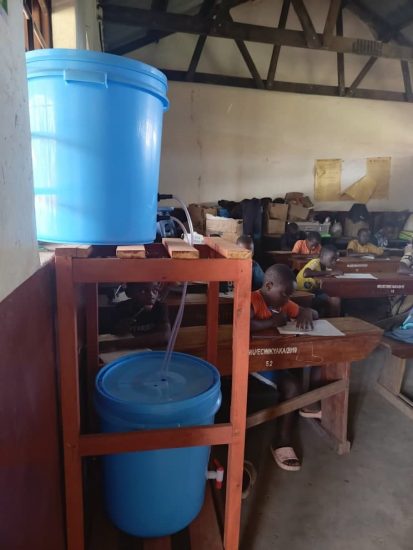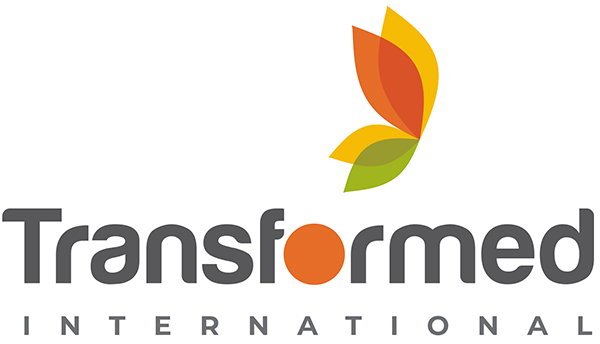Kyaka II Monitoring Report April 2025
In September 2024, with the sponsorship of The Aall Foundation, we implemented a pilot project providing Lifewater Systems to a number of schools and health centres in the Kyaka II Refugee Settlement. Details of this can be read in our news letter at https://www.transformedinternational.org/kyaka-ii-refugee-settlement-schools-and-health-centres-lifewater-pilot/
In March/April 2025, the local Nsamizi team (under the auspices of the UNHCR) visited several of the schools to monitor the effectiveness of the systems and their implementation.
They also arranged for water samples to be tested for E.coli contamination. Water samples were collected from various points across Kyaka II refugee settlement, including communal water points, household storage facilities and specific supply points. Standard water quality monitoring protocols were followed for the sample collection, storage and transportation to the laboratory. E. coli testing was conducted using the “Del Aqua Incubator method”.
Water collected from places where Lifewater systems are known to be in use showed zero instances of E.coli contamination.
Here are some extracts from their report.
PREPARED BY: THE PHP TEAM, NSAMIZI-UNHCR PROJECT - KYAKA II
Introduction
Kyaka II Refugee Settlement is one of the five refugee settlements located in Kyegegwa district, South Western Uganda, with an estimated population of over 133,000 refugees from Rwanda, Democratic Republic of Congo (DRC), Burundi, Somalia among others. The settlement has 6 Health Facilities, 11 primary schools and 2 secondary schools. All institutions have adequate water supply and storage that includes; tap water and rain water.
However, most of these institutions lack water treatment options. In addition, these schools often fail to boil/treat this water due to lack of budgets for buying firewood, charcoal, lack of functional water filters, safe water storage and dispensing containers among others thus putting the learners at risk of contracting water borne diseases especially diarrhoea.
There is therefore a need to provide water filters to both health and education institutions in Kyaka II settlement to ensure adequate safe drinking water supply in all the institutions, an aim for this program.

Key Findings Identified
In this monitoring report, a total of three schools that received the Institutional water filters support in the pilot project implemented by LifeWater, were monitored.
- Kakoni Primary School
Functionality
- The school received a total of 4 water filter systems, of which 3 systems were found to be functional and in use (1 placed in the staffroom, 1 in Primary 6 class and another in Primary 5 class).
- 1 water system was found to be non-functional and not in use. This was related to misplacement of a rubber washer by learners during the routine cleaning.
Maintenance
- Each class had a cleaning rota where a group of learners were scheduled to do cleaning of the systems on a weekly. The oversight was by the teacher patron attached to the WASH club.
- The same schedule is followed in filling the systems which happens in the evening before learners go home after classes. This water is then used during the course of the following day, with utensils each tasked to use their own containers.
- The systems were also stored safely in the school library during the holidays and were able to reused the following term.
2. Bujubuli Primary School
Functionality
- The school received a total of 4 water filter systems, of which 3 systems were found to be functional and 2 in use (1 placed in the lower section of primary (primary 1 to primary 4) and the other in the upper section (primary 5 to primary 7).
- 1 water system was found to be non-functional and not in use. This was reported to have succumbed to strong winds that led to a fall-breaking 1 filter of the filters and the bucket that houses the filters. This had been stored in the school store as they plan to replace the broken bucket for reutilization.
Maintenance
- Each class had a cleaning rotter where a group of learners were scheduled to do cleaning of the systems on a weekly.
- The same schedule is followed in filling the systems which happens in the evening before learners go home after classes. This water is then used during the course of the following day, with utensils each tasked to use their own containers.
- The 3 systems were also stored safely in the school store during the holidays that was lockable and were able to reused the following term.
3. Bujubuli Secondary School
Functionality
- The school received a total of 4 water filter systems, of which none of the systems were found to be functional. These had all been damaged with others having been stolen during the holidays. Additionally, they reported that the failure by the previous management team to handle over the filters to the new regime during the close of the previous term caused the negligence. The school management reported that this incidence happened during holidays when relating to insecurity around the school.
- However, these had been functional the previous term before breaking up for Christmas holidays.
Key Learnings
· The water provided by the water filter systems was well appreciated and better utilized in the schools and was used for the purpose of drinking.
· The systems in primary schools were placed in the upper classes which managed them well with schedules for cleaning.
· During Holidays, the schools that utilized the school stores with good management managed to safely store and use the systems the following term unlike Bujubuli secondary school.
· It’s more efficient to allow leadership of WASH clubs be composed of non-candidate learners as these can ensure continued utilization even after the end of the year when candidates leave.
· Having schedules/a cleaning rota for the systems ensures regular maintenance and accountability to the users of the systems.
· The systems are more utilized if learners carried their own drinking water containers since it reduces traffic in case of shared cups.
· Reduced expenditure on other cooking fuels like firewood and charcoal for boiling drinking water given that the filters effectively make water safe for drinking and cooking.
· Reduced incidences of learners from the upper classes and secondary schools, drinking unsafe water while at the school premises.
· Distribution of water systems at both the household level and institutional level ensures continued access to safe drinking water for learners but also makes it easier for learners to maintain the systems given that the rich experience.
· Selection of institutions that isn’t need-based affects the sustainable functionality and utilization of the water filters.
· Training of institutional custodians that isn’t sustainable i.e., that does not target transition and continuity leads to systems non-functionality in the future.
· Participation of all stakeholders during monitoring is key in promoting effective use of the water filter systems.

Conclusion
The distribution of water filters in institutions should always be needs based with a multisector commitment to monitoring to ensure its success. Great thanks go to the donors (The Aall Foundation) and the LifeWater team with support from Nsamizi-TISD, FCA, OPM and UNHCR for this initiative and the support rendered to the schools as well as the health centres.
